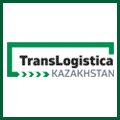GUANGZHOU Railway Huizhou section posted a revenue of CNY1.05 billion (US$166 million) last year, CNY8.9 million more than its annual target, Xinhua reports.
Last year, Guangzhou Railway Huizhou section enhanced its efficiency and optimised its operations, and handled 704,211 tonnes of sea-rail intermodal cargo, a sharp increase of 573 per cent over 2010's volume.
This year, Huizhou section aims to achieve a year-on-year growth of 23 per cent in its cargo movement. To meet the target, the railway is seeking to sign transportation agreements with a number of steel plants and reduce transport charges.
Shipping Gazette - Daily Shipping News
CHARLESTON, South Carolina, has handled its first project cargo shipment for Toshiba's Westinghouse Electric Company, part of a series of deliveries to the state's nuclear plant over the next few years.
The high, wide and heavy cargo arrived at Charleston's Columbus Street Terminal, and is being shipped to the South Carolina Electric & Gas Company's (SCE&G) nuclear plant expansion 30 miles from the state capital of Columbia.
Crews offloaded a large amount of specialty cargo from the 10,500-ton HR Recommendation, operated by BBC Chartering. From there, the cargo moved by rail and truck to SCE&G's project site.
A US$23-million improvement project completed last year at the 135-acre Columbus Street Terminal to enhance the facility's mix of on-dock rail, storage and heavylift capabilities. The terminal handles a variety of non-container freight, including vehicles, other rolling stock, breakbulk, heavylift and project cargo, including power generation equipment.
"This is a project that will boost port volume and maritime jobs over the course of several years," said Jim Newsome, president and CEO of the South Carolina Ports Authority. "We are very pleased that Westinghouse selected the Port of Charleston for this project, which further establishes our port as the premiere east coast port for power generation moves."
In 2011, the Port of Charleston held a full half of the US south Atlantic ports' market share in the non-containerised power generation segment.
The project, which is scheduled for completion in 2018, involves handling about 24,000 tons of equipment that will be deployed at VC Summer Units 2 and 3 in Jenkinsville, SC.
Thirty ships will deliver machinery and equipment - some pieces weighing up to 700 tons apiece - for onward passage by rail and truck to the site.
Westinghouse Electric Company, now part of Japan's Toshiba group, is also a nuclear energy company and is a leading supplier of nuclear plant products and technologies.
Shipping Gazette - Daily Shipping News
THE US Port of Charleston' s container throughput increased by 7.7 per cent in April compared to the same month the previous year to 123,439 TEU.
According to a statement issued by the South Carolina Ports Authority (SCPA), the result marked the strongest April seen at the port since 2008.
Containerised traffic for the 10 months comprising the fiscal year to date (June through April) was up 2.7 per cent from the same period last year, while container volume for the calendar year to date (January through April) increased 7.3 per cent over 2011 levels.
The SCPA's non-container cargo continued its upwards trend, with breakbulk tonnage in the Port of Charleston up 57 per cent in April year on year and up nearly 24 per cent in the fiscal year to date.
Two new, weekly container services connecting the Port of Charleston to markets in Asia in June, including the first direct Vietnam call for the port, will help boost container volumes further.
Shipping Gazette - Daily Shipping News
SIEMENS Drive Technologies Division is to supply propulsion and power generation systems on Maersk Line's 18,000-TEU Triple E class ships at a order value of millions from Korea's Daewoo Shipbuilding and Marine Engineering.
The twin propulsion systems will include 3 MW shaft generator motors and power generation systems with waste heat recovery systems (WHR). The WHR allows exhaust gas from the engine to be captured and to run combined exhaust gas/steam turbine genset, which in turn generates electrical energy.
United States hits Chinese solar panel manufacturers with a 31pc tariff
The US Commerce Department has applied anti-dumping tariffs on 31 per cent of the US$3.1 billion in Chinese solar panel imports, half the American market by volume, reports the New York Times.
The antidumping decision is among the biggest in American history, covering one of the largest and fastest-growing categories of imports from China.
JinkoSolar, a Chinese solar manufacturer, said the firm might shift production to existing factories in Canada, but some analysts are sceptical that Chinese banks are ready for another round of lending to fund an industry-wide jump abroad.
Many solar panel installers in the United States have opposed tariffs on Chinese panels because the volume helps publicise solar panel use. The tariff is expected to mean price increases, they said.
Li Junfeng, an energy policy maker and regulator in the Chinese government who is also the president of the government-controlled Chinese Renewable Energy Industries Association, said: "This is really dangerous, " adding that Chinese companies would retaliate by filing a trade case at China's commerce ministry accusing big American chemical companies of dumping polysilicon, the main ingredient in solar panels, on the Chinese market.
Wiley Reing trade lawyer Alan Price said: "China sets forth industry-specific Five-Year Plans and then uses national and local subsidies. China's ability to ramp up and overwhelm an industry is unique and particularly devastating with new and emerging technologies."
Shipping Gazette - Daily Shipping News
THE Estonian national railway, Eesti Raudtee (EVR) experienced a slowdown in cargo transport of 6.8 per cent in the first four months of 2012 to 10.37 million tonnes compared to same period 2011.
But container volumes increased 68 per cent to 17,113 TEU with April boasting of two-fold year-on-year increase at 4,386 TEU, reported Riga-based Baltic Course.
Overall tonnage in April was down year-on-year by 1.9 per cent to 2.49 million tonnes with oil products transport volume down 17.6 per cent to 1.49 million tonnes together with a decline of 13.6 per cent in the first four months at 6.6 million tonnes.
Transshipments fell 2.1 per cent to 8.19 million tonnes during the first four months of the year.
Shipping Gazette - Daily Shipping News
UPS has shipped 375,000 doses of flu vaccines worth US$9 million half way around the world which involved complex, precise planning flying temperature-sensitive pharmaceuticals on five flights from Louisville to Laos.
The vaccines, donated by Walgreens, were transported from the company's healthcare distribution centre in Louisville, Kentucky to Bangkok's Suvarnabhumi Airport, after routing through Anchorage, Alaska; Incheon, Seoul; and Shenzhen. They then took 20 hours to get to Vientiane by truck.
Mark Davis, product manager of UPS healthcare logistics, told Atlanta-area Air Cargo World that the big challenge was keeping the vaccines at five degrees Celsius throughout. To overcome this difficulty, the flu vaccines were enclosed in two PharmaPort 360 containers, which are capable of fitting on the smaller-bodied aircraft used in south east Asia.
"UPS Temperature True service with the PharmaPort 360 container was up to the task and performed flawlessly, delivering the vaccine on time, to the right location and in the right condition," he said.
In Laos the vaccines were administered to citizens by healthcare workers from the US Centres for Disease Control and Prevention.
Mr Davis expects pharma transport will become a bigger business for UPS. The company opened five pharmaceutical facilities last year in the Americas, Europe and Asia, as well as acquiring Italian pharmaceutical logistics company Pieffe at the end of 2011.
Shipping Gazette - Daily Shipping News
FINNAIR has started a direct service from Helsinki to Chongqing's Jiangbei International Airport, marking the launch of the first direct flight service between western China and northern Europe, Xinhua reports.
This is the fourth line to China operated by Finnair, using Airbus 330, offering four flights a week, Tuesdays, Thursdays, Saturdays and Sundays, taking off at 0940 hrs, reaching Helsinki at 1405 hrs (local time) and returning from Helsinki every Monday, Wednesday, Friday and Saturday at 1730 hrs (local time), arriving at Chongqing at 0710 hrs the next day.
Helsinki is one of the major air hubs in Europe; passengers can transit via Helsinki to more than 50 European cities.
Shipping Gazette - Daily Shipping News
MAINLAND China's largest private carrier Hainan Airlines has inaugurated the first service from northern China's hinterland city Taiyuan via southern Hainan provincial capital of Haikou to Singapore, Xinhua reports.
The service uses Boeing 737-800 aircraft, offering two flights a week on Monday and Friday. Singapore-bound flight takes off at 0735 hrs from Taiyuan, reaches Haikou at 1120 hrs, takes off again at 1230 hrs and arrives at Singapore at 1540 hrs. Returning flight takes off from Singapore at 1640 hrs, arrives at Haikou at 2000 hrs, and leaves again at 2110 hrs, before arriving at Taiyuan at 0030 hrs (all local time).
Including the new service, Taiyuan airport is operating international lines to Taipei, Taichung, Hong Kong, Macau, Osaka, Shizuoka, Bangkok, Incheon and Singapore. By the end of the year, the airport's passenger throughput is expected to hit seven million.
Shipping Gazette - Daily Shipping News
THE terminal operating unit of AP Moller-Maersk Group, APM Terminals posted a 66 per cent increase in first quarter net profit year on year to US$235 million.
First quarter results were positively affected by volume growth in West Africa and after-tax divestment gains of $73 million. The global container terminal market measured in TEU increased by 1.4 per cent from last year.
The number of containers handled by APM Terminals (measured in crane lifts weighted with APM Terminals' ownership interest) increased by 10 per cent from 7.8 million TEU in the first quarter of last year to 8.6 million TEU in the first three months of 2012. Excluding the impact of portfolio changes, volumes increased by five per cent.
"We are pleased with the stable progress - especially since this allows us to invest in locations where our customers need us to provide capacity," said APM Terminals CEO Kim Fejfer.
The quarter showed a varied regional performance, with West Africa and some terminals in Asia demonstrating very high growth rates, whereas volumes in most European terminals were below quarter 2011. Operations in some terminals in North Africa, Europe and the Middle East have been negatively affected by local political unrest or labour issues.
The inland activities continued to contribute positively to the financial performance. The Tariff Authority for Major Ports in India (TAMP) reduced the tariffs for Gateway Terminals India in Mumbai by 44 per cent in February 2012. The ruling is being contested in court due to the potential negative effect on the terminal's profitability.
Significant events during the first quarter include APM Terminals disposing of half of the 50 per cent interest stake in the Xiamen terminal in China with an after-tax gain of $21 million. Further to this, Maersk Equipment Service Company Inc USA, was divested in March 2012 with an after-tax gain of $48 million.
APM Terminals took control of the operations in the Skandia Container Terminal in Gothenburg, Sweden, effective January 4.
The concession agreement governing APM Terminals' Moin Container Terminal (TCM) has received final approval from the Costa Rican authorities. The 18-month implementation phase can now begin.
Shipping Gazette - Daily Shipping News
EARLY news of the Port of Los Angeles record-breaking 14.5 per cent increase in container volume to 707,182 TEU in April has been dampened by later news of Long Beach's 14 per cent slump in import laden boxes to 232,963 TEU.
The combined laden imports arriving at the San Pedro Bay twin port complex in April increased 2.6 per cent to 597,518 TEU year on year, which is seen as a positive sign for the coming transpacific peak season.
Overall, LA's laden container imports increased 16.7 per cent to 364,555 TEU while exports were up 11.6 per cent to 186,838 TEU. But Long Beach laden imports volumes fell 14 per cent to 232,963 TEU as exports declined 16 per cent to 120,452 TEU.
The Long Beach decline was attributed to the move of California United Terminals last year from Long Beach to LA. But Long Beach now pins its hopes of renewal on the Middle Harbour terminal plan with its Hong Kong's OOCL expected to bring in fresh volumes.
Shipping Gazette - Daily Shipping News
DANISH shipping giant Maersk Line has sounded the warning in Latin American of coming rate hikes in the face of higher fuel, steel, terminal and container costs after reporting a US$599 million first quarter financial loss.
"The goal is to boost profitability and safeguard the continuity of service levels. Fuel prices have risen 250 per cent, while Maersk Line's rates have dropped more than 10 per cent across Latin America," said a company statement.
Maersk Line said Latin America is important enough to warrant a US$2.2 billion 2011-2013 investment programme with the delivery of 16 new vessels, known as SAMMAX (South America Max) with a capacity of 7,500 TEU.
Other investments include $992 million in the Moin terminal, Costa Rica; $170 million in the building of a container factory in Chile; $200 million in construction of two supply vessels at Asenav in Chile; $450 million in Brazil's Santos terminal; $1.26 billion in Maersk Peregrino's FPSO in Brazil's Campos Basin and $3 billion in oil and gas exploration and acquisitions in Brazil, said the company statement.
"The shipping industry is losing money," said Maersk Latin America CEO Robbert Jan Van Trooijen. "Previously, we followed the downward market trend on rates to regain market share, but today we are happy with our position and see Latin America as a growth opportunity. To achieve this, our prices must reflect the current environment of higher fuel, container and terminal costs."
Maersk Line moved 183 million tonnes of cargo in 2011 and is the largest container carrier in the world. Latin America represents 14 per cent of Maersk container volume and the carrier has a 15 per cent market share in the region, said the company statement.
AP Moller-Maersk Group also includes terminal operations (APM Terminals), freight forwarding, supply chain management (Damco) and tanker (Maersk Tankers).
Shipping Gazette - Daily Shipping News
GERMAN transport logistics provider DB Schenker is building a 46,000-square-metre logistics centre in Kunshan, west of Shanghai for Kone, the global lift and escalator provider to open this autumn.
"With the new centre, we are setting a new standard in challenging distribution solutions for an industry with highest demands in terms of quality and speed," said DB Schenker North-Central China chief Karl-Heinz Emberger.
DB Schenker has provided services for Kone in Kunshan since 2009. But the 26,000-square-metre warehouse cannot cope with coming expansion. DB Schenker stores the lift and escalator components from the company's German plants, then labels the products and loads them onto trucks for distribution throughout China.
There are currently 24 staff with another 45 new hires due next year to run the new plant in the Kunshan Junxi Eco-Industrial Park.
Shipping Gazette - Daily Shipping News
LOGISTICS companies in China and Japan has signed agreements on agency business for each other to co-operate the Hunchun-China, Zarubino-Russia, Niigata-Japan international land-sea transport service in northeast China's Changchun city, reports Xinhua.
The service links Jilin province to Japan and South Korea via Zarubino, Russia. This development of the route business will play a positive role in promoting the province and Japan to strengthen economic and trade exchanges.
Jilin Changjitu International Logistics Group and Japan Niigata International Shipping Group finally reached an agreement to act as agent for each other on operating the route and organising the shipments, after the preliminary research and demonstration, the overall planning and trial voyage, the promotion of cooperation between logistics companies in the three countries,
Over the years, Jinlin and Niigata, Japan have made efforts in promoting the construction of the land-sea transport route, the cooperation in cross-border tourism and the facilitation of cross-border transport.
Shipping Gazette - Daily Shipping News
SOUTHWEST Guizhou provincial energy resource transport project via the Hongshui River has passed inspection by the Transport Ministry, reports Xinhua.
The project will transport energy resources by trucks and ro-ro vessels with an aim to move annually 14 million tonnes to the Pearl River Delta via the Hongshui River by 2015.
The Hongshui River, a key waterway connecting to the Pearl River, has a drainage area of 55,000 square kilometres covering Yunnan, Guizhou and Guangxi. The river's transport capacity will reach 21 million tonnes by 2020. Guizhou has built eight river ports along its 360-kilometre shipping lane, which can accommodate vessels of more than a 1,000 tonnes.
Shipping Gazette - Daily Shipping News
GERMANY's DB Schenker Logistics has opened up its own business in Windhoek, the capital and the largest city of Namibia with an office in another city Walvis Bay, after acquiring full ownership of service partner Desert Logistics, which used to operate the business in the region in the past five years.
"The focus of the activities is on looking forward to exponential growth in the Namibian market whilst maintaining good relations with existing customers by providing reliable and cost efficient world class logistics services," said regional director NME/Africa Peter Glatz in a company statement.
"I am proud that all current employees of Desert Logistics remain with us," said, managing director of Schenker Namibia (Pty) Ltd Fritz Kaufmann, who was the former chief of Desert Logistics. "We plan to grow and expand our market share."
The company said its highlighted services include air and ocean freight, freight forwarding (road and rail), customs clearing, warehousing and distribution, courier services, and ground handling.
The new Schenker Namibia (Pty) Ltd strengthens the global DB Schenker network that comprises 2,000 locations in more than 130 countries.
Shipping Gazette - Daily Shipping News
The magazine SEA has been published since 1935
International business magazine JŪRA MOPE SEA has been published since 1999
The first magazine in Eurasia in the four languages: English, Chinese, Russian and Lithuanian
|
|




.jpg)






